Marketing Problem Statement Samples
-
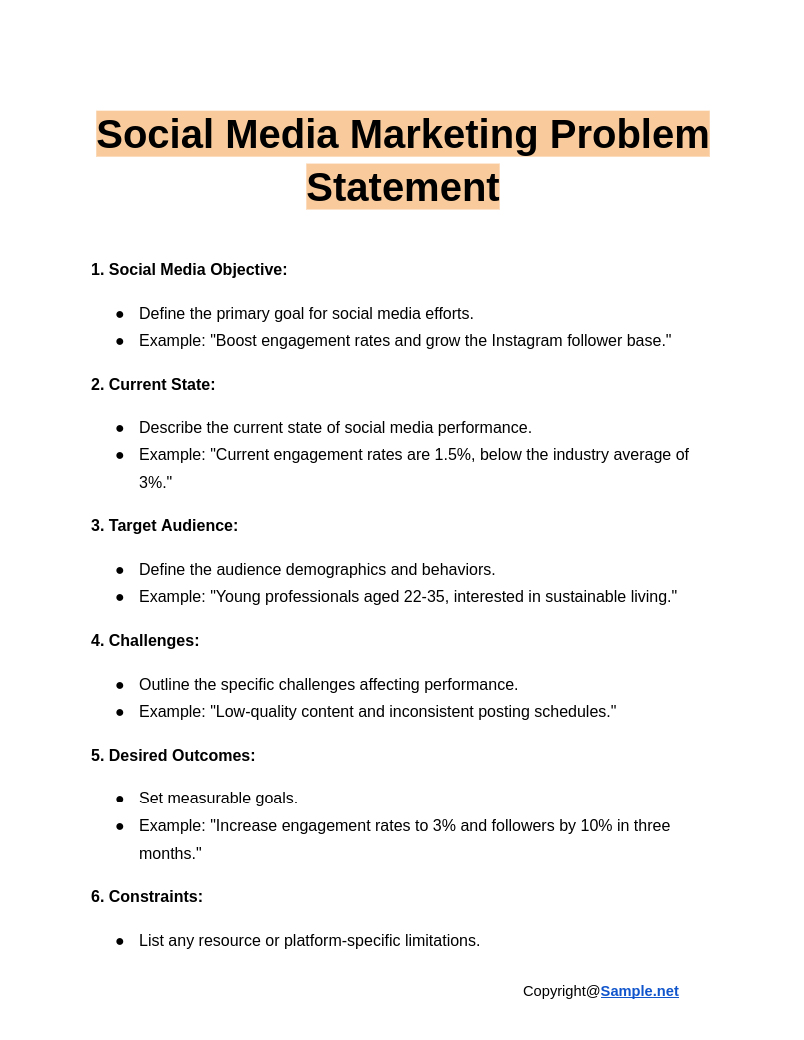
Social Media Marketing Problem Statement
download now -
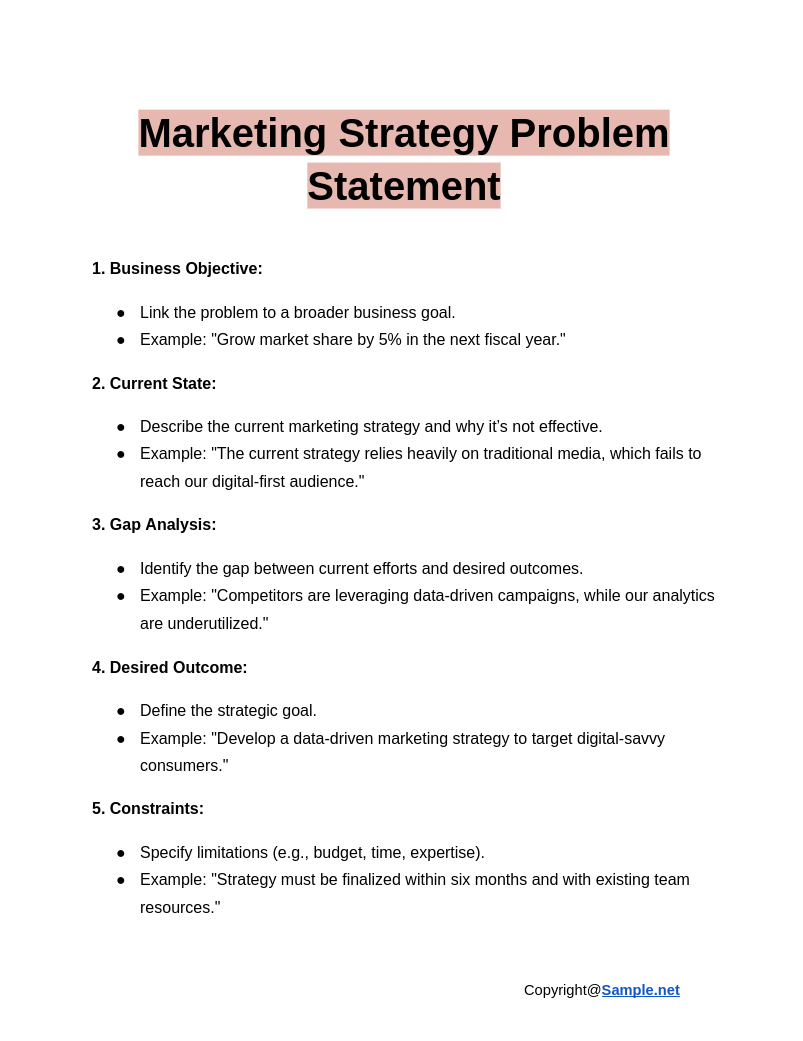
Marketing Strategy Problem Statement
download now -
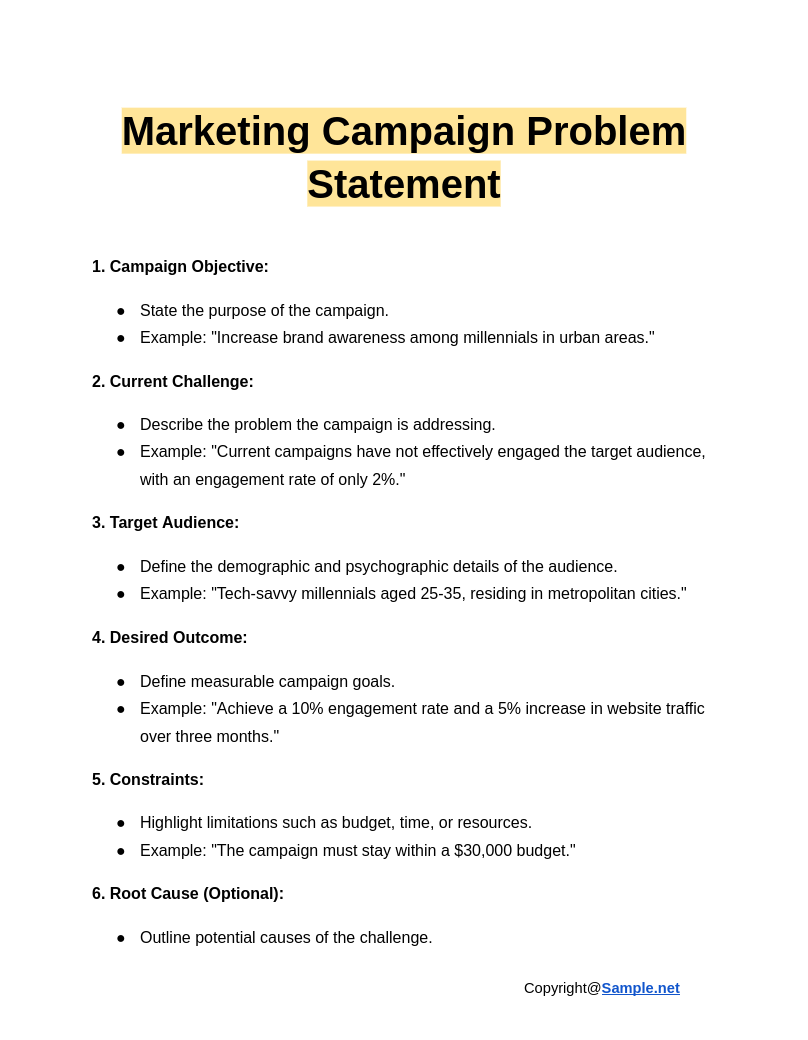
Marketing Campaign Problem Statement
download now -
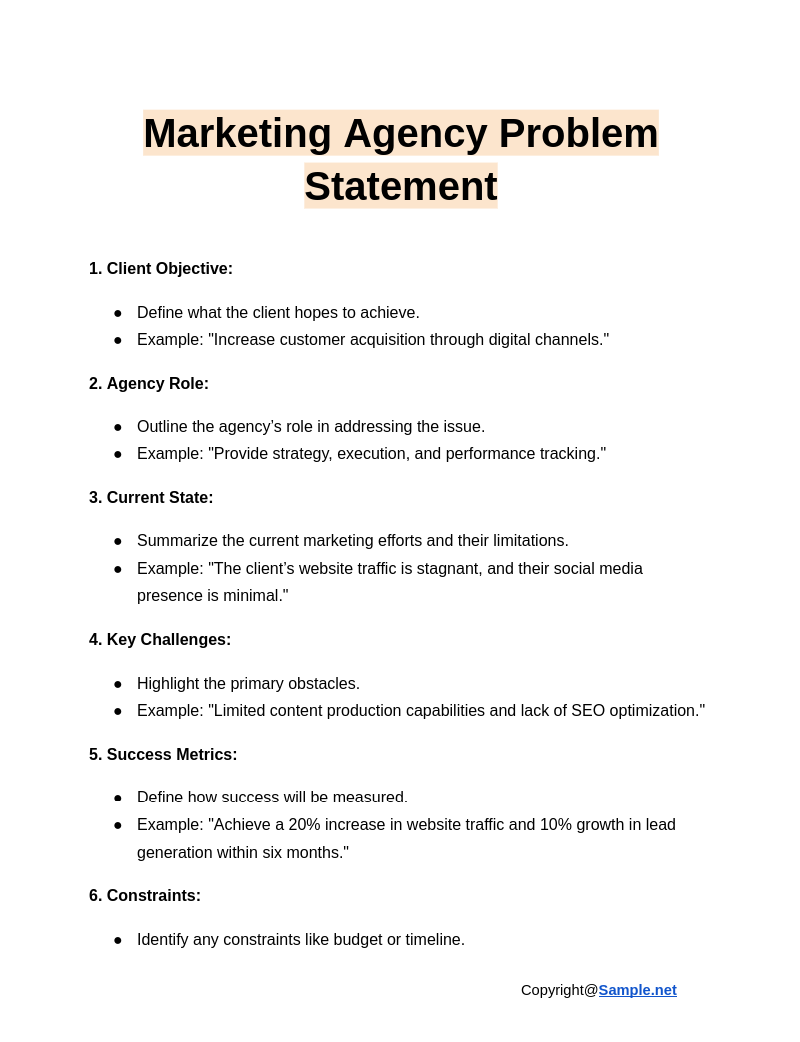
Marketing Agency Problem Statement
download now -
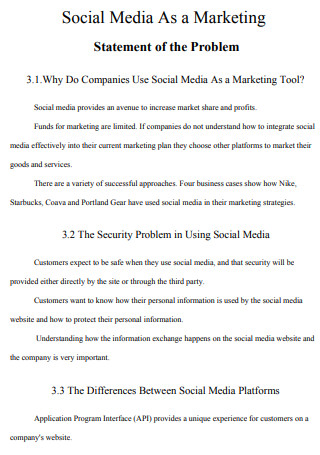
Social Media Marketing Problem Statement
download now -
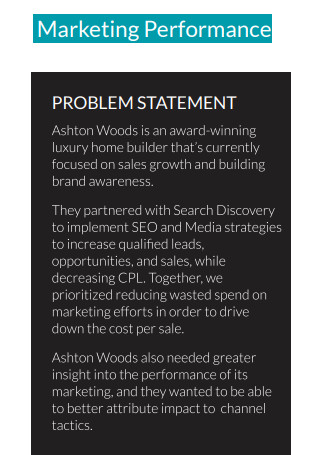
Marketing Performance Problem Statement
download now -

Marketing Business Strategy Problem Statement
download now -
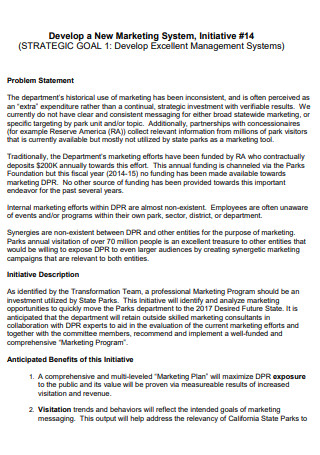
New Marketing System Problem Statement
download now -
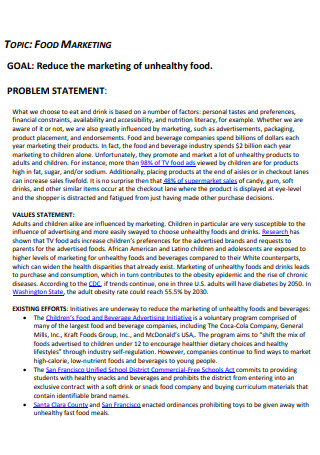
Food Marketing Problem Statement
download now -
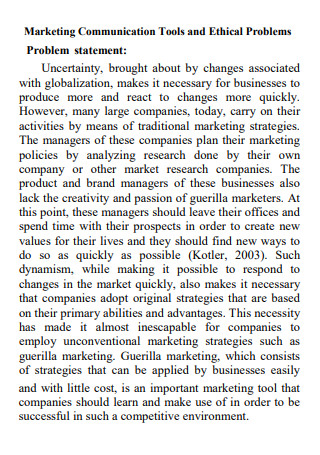
Marketing Communication Problem Statement
download now -
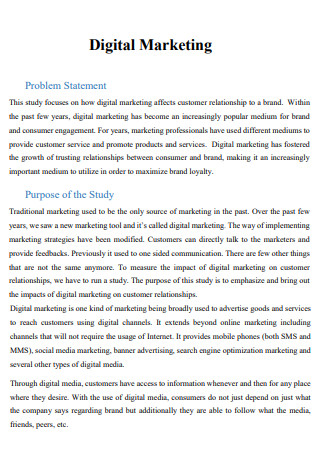
Digital Marketing Problem Statement
download now -
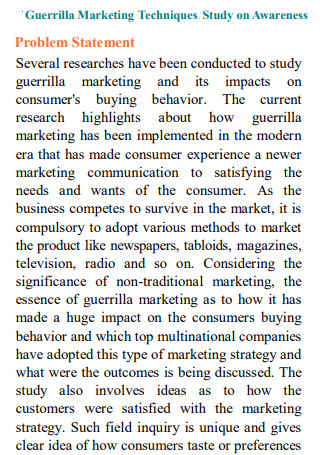
Marketing Study Problem Statement
download now -
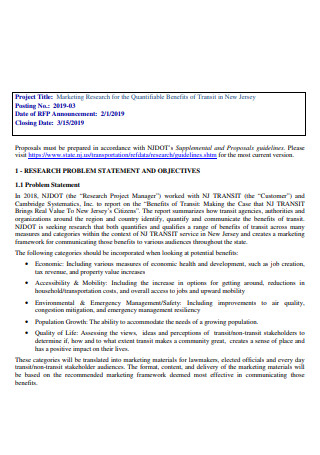
Marketing Research Problem Statement
download now -
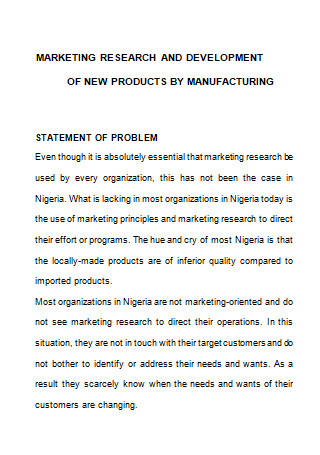
Marketing Research Development Problem Statement
download now -

Customer Relationship Marketing Problem Statement
download now -
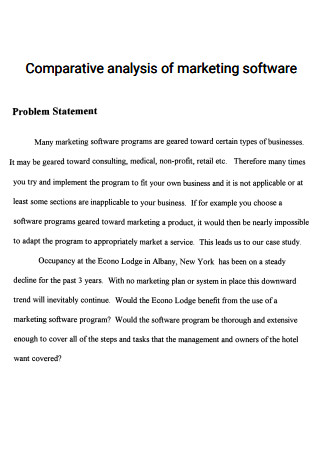
Comparative Analysis of Marketing Problem Statement
download now -
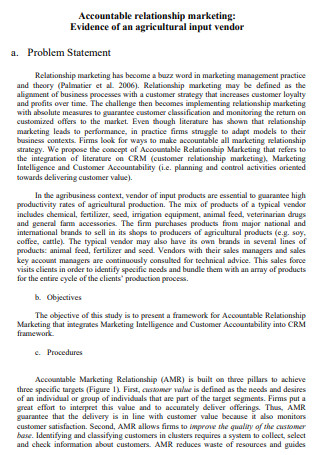
Agricultural Relationship Marketing Problem Statement
download now -
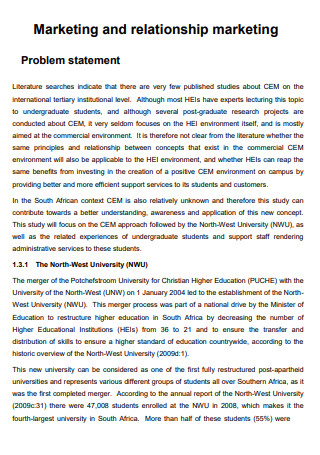
Sample Marketing Problem Statement
download now -
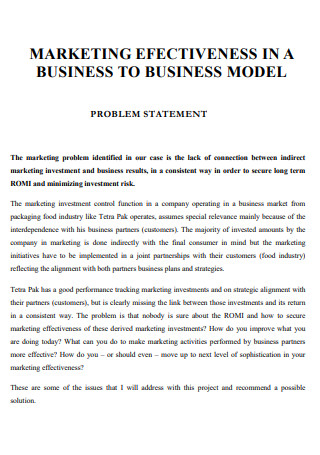
Marketing Effectiveness Problem Statement
download now -
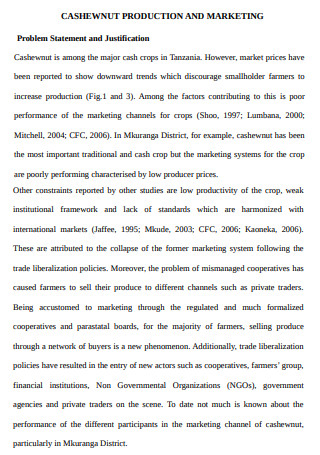
Cashewnut Production Marketing Problem Statement
download now
FREE Marketing Problem Statement s to Download
Marketing Problem Statement Format
Marketing Problem Statement Samples
What is a Marketing Problem Statement?
Purposes of a Marketing Problem Statement
How to Create a Marketing Problem Statement
FAQs
How do you write a marketing problem statement?
What are the 5 elements of a problem statement?
What are some problems in marketing?
Who uses marketing problem statements?
What are common mistakes in creating a marketing problem statement?
How does data analysis enhance problem statement creation?
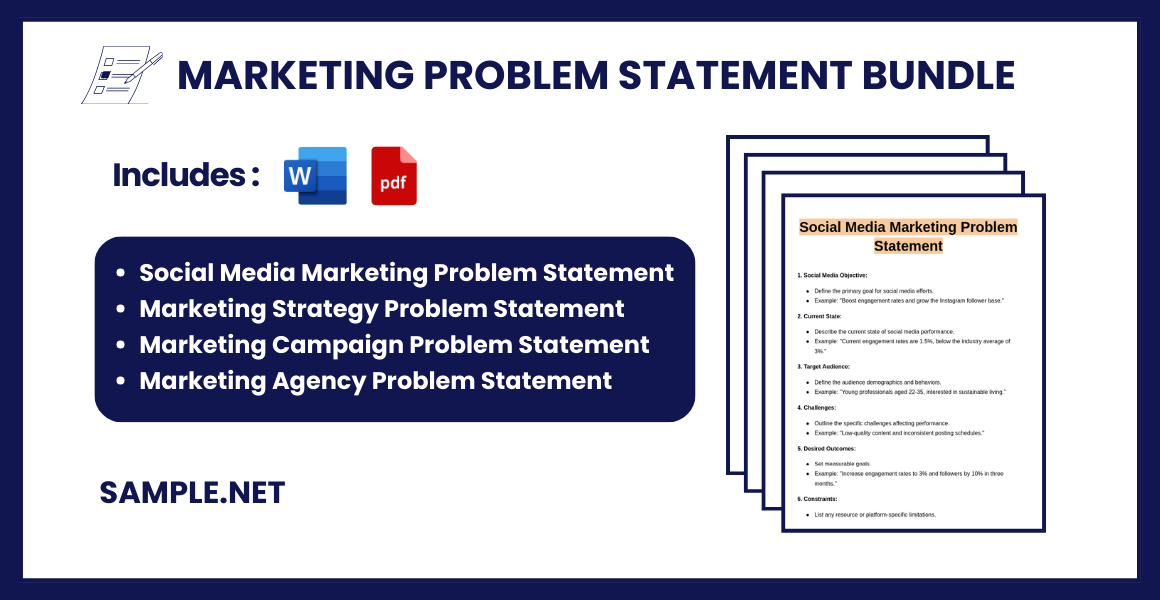
Download Marketing Problem Statement Bundle
Marketing Problem Statement Format
1. Title:
- A short, descriptive title summarizing the problem.
2. Background:
- Provide context for the problem.
- Describe the current situation or environment.
- Include relevant data, trends, or events.
3. Problem Description:
- Clearly articulate the specific challenge or issue.
- Answer the questions: What is the problem? Why is it important?
- Avoid proposing solutions in this section.
4. Target Audience:
- Identify the audience or segment impacted by the problem.
- Specify their demographics, behaviors, or preferences as relevant.
5. Impact:
- Explain the potential consequences of not addressing the problem.
- Highlight how the problem affects business objectives, such as revenue, brand reputation, customer acquisition, or retention.
6. Desired Outcome:
- Define the ideal state or result after solving the problem.
- Be specific about what success looks like.
What is a Marketing Problem Statement?
A marketing problem statement is a concise declaration that identifies a specific challenge faced by a business in achieving its marketing objectives. It serves as a foundation for addressing issues like declining sales, poor customer engagement, ineffective campaigns, or a lack of market penetration. Crafting a clear and focused problem statement is crucial for developing targeted strategies that solve the issue and improve overall marketing performance. A well-defined statement bridges the gap between the problem and actionable solutions.You can also see more on User Problem Statement.
Purposes of a Marketing Problem Statement
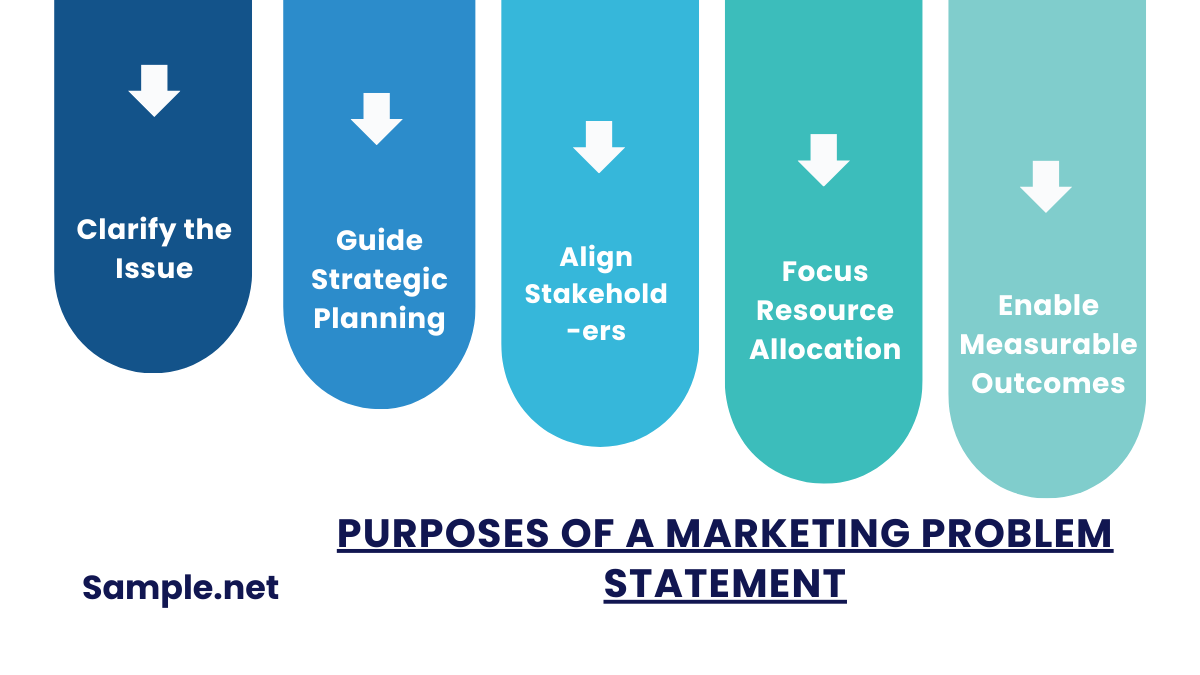
1. Clarify the Issue
A marketing problem statement helps identify and articulate the specific challenge hindering marketing success. It ensures that the team understands the core issue instead of focusing on symptoms or vague concerns.
2. Guide Strategic Planning
It serves as the foundation for developing focused and data-driven marketing strategies, ensuring efforts align with resolving the identified problem effectively.
3. Align Stakeholders
By clearly defining the problem, a marketing problem statement ensures that all team members and stakeholders are on the same page, fostering collaboration and minimizing misunderstandings. You can also see more on Communication Problem Statement.
4. Focus Resource Allocation
It helps allocate time, budget, and personnel efficiently by directing resources toward addressing the most critical marketing challenges.
5. Enable Measurable Outcomes
A well-crafted problem statement allows teams to set clear goals and metrics for evaluating the success of the solutions implemented to address the issue. You can also see more on Quality Problem Statement.
How to Create a Marketing Problem Statement
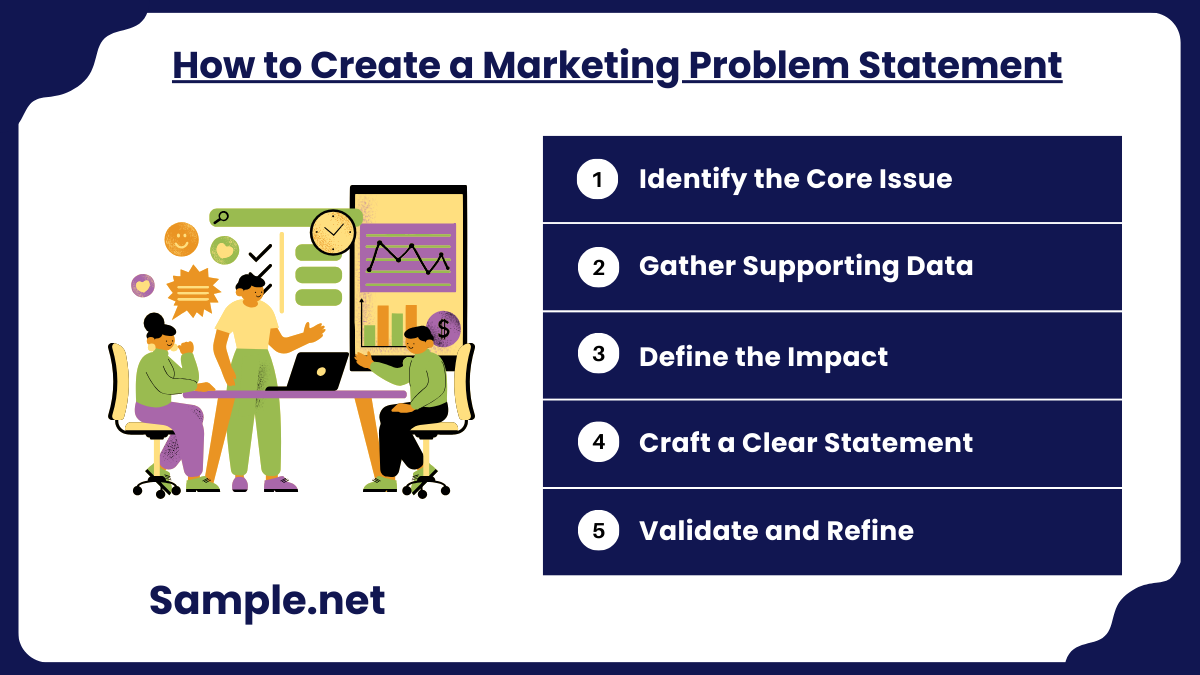
To create a concise marketing problem statement, you need to do more than just identify the problem. And if you are looking for quick and convenient problem statement templates, there are tons of sample templates above that are available to download. Select one that suits your needs then follow the basic tutorial guide below.
Step 1: Identify the Core Issue
Analyze your marketing data to pinpoint the specific problem affecting your goals. This might include declining customer engagement, low conversion rates, or ineffective campaigns. Ensure the issue is well-defined and specific. For example, “Our social media ads have a click-through rate (CTR) 20% below the industry average.” You can also see more on Research Problem Statement.
Step 2: Gather Supporting Data
Collect quantitative and qualitative data to understand the problem’s scope and its root causes. Use analytics tools, customer surveys, and competitor benchmarking to identify trends and factors contributing to the issue. This data strengthens the credibility of your problem statement.
Step 3: Define the Impact
Explain how the problem affects your marketing goals or overall business. For instance, a low CTR might reduce lead generation, leading to fewer conversions and a loss of revenue. This step highlights the urgency and importance of addressing the issue.
Step 4: Craft a Clear Statement
Combine the issue, supporting data, and impact into a concise and actionable problem statement. Avoid vague language and focus on the specifics. For example: “Our email campaigns have a 10% open rate, significantly below the industry standard of 20%, leading to decreased lead nurturing effectiveness.”
Step 5: Validate and Refine
Share the draft statement with key stakeholders for feedback. Ensure the statement is accurate, aligns with business objectives, and resonates with team members. Refine it based on their input to ensure clarity and relevance. You can also see more on Analytics Problem Statement.
FAQs
How do you write a marketing problem statement?
To write a marketing problem statement, it needs to be specific and targeted. Avoid crafting a problem that is too vague or general. Refer to the previous section for more detailed instructions on how to create a marketing problem statement.
What are the 5 elements of a problem statement?
According to an article on Medium, the five elements of a problem statement are the problem, the solution, the purpose, the procedure, and the results.
What are some problems in marketing?
Some problems in the field of marketing include lack of resources and organizational support. Refer to the example problems in the earlier sections for a more in-depth discussion on marketing problems. You can also see more on Architectural Problem Statement.
Who uses marketing problem statements?
Marketing teams, business strategists, and decision-makers use them to guide campaigns and improve performance.
What are common mistakes in creating a marketing problem statement?
Common mistakes include being too vague, lacking supporting data, overcomplicating the issue, and proposing solutions within the statement. These errors hinder clarity and effective problem-solving. A well-crafted statement should remain focused on the problem itself.
How does data analysis enhance problem statement creation?
Data analysis provides evidence to back the problem statement, ensuring it is specific, measurable, and credible. It helps identify trends, audience behavior, and campaign inefficiencies, leading to a more targeted and actionable problem definition. You can also see more on Dissertation Problem Statement.
